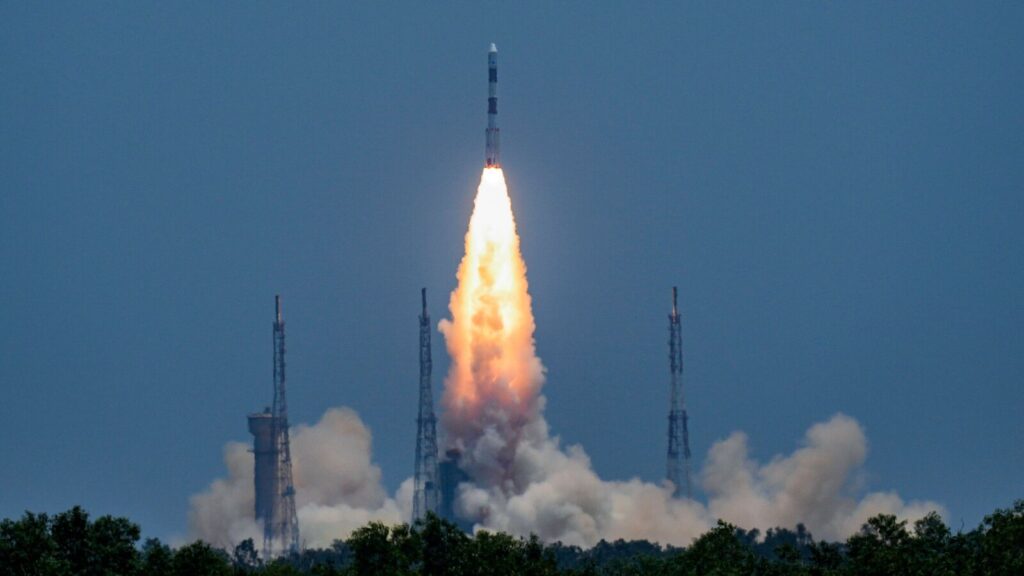The , India’s inaugural space-based solar observatory, is set to arrive at its designated orbit, as informed by the (ISRO) that the satellite is scheduled to reach its destination orbit on January 6 at 4 pm. Earlier, ISRO Chairman S Somanath told ANI “Aditya-L1 is going to reach its L1 point on January 6 and we are going to do the final manoeuvre to keep it there. ” What next for Aditya L1 after reaching Lagrange Point 1? Aditya-L1 is anticipated to remain for the next five years.
Situated at a distance of 1. 5 million km from Earth, the Aditya-L1 satellite, launched from Sriharikota on September 2, will execute a crucial manoeuvre upon reaching L1. This manoeuvre is aimed at establishing a stable orbit, enabling the satellite to conduct uninterrupted and comprehensive observations of the Sun.
Also Read: “Lagrange point is a region where gravity between earth and sun will neutralise. Absolute neutralisation is not possible because there are other bodies like the Moon, Mars, and Venus,” Somanath said. As reported by , the ISRO chief had said that the data will be very useful in understanding the dynamics of the Sun and how it affects our lives.
“Once it is successfully placed on L1 point, it will be there for the next five years, gathering all the data which are very important not for India alone but for the entire world,” the ISRO chief said. What is Aditya-L1 mission? , described as a “satellite dedicated to the comprehensive study of the Sun,” was successfully launched by the Polar Satellite Launch Vehicle (PSLV-C57) on September 2, 2023. Representing the first space-based observatory class Indian solar mission, Aditya-L1 is specifically designed for the in-depth study of the Sun.
Also Read: The spacecraft is equipped with seven payloads designed for observing the photosphere, chromosphere, and the outermost layers of the Sun (known as the corona) through the use of electromagnetic and particle detectors. Also Read: “Using the special vantage point of L1, four payloads would directly view the Sun and the remaining three payloads would carry out in-situ studies of particles and fields at the Lagrange point L1,” the ISRO said. Also Read: The payloads on Aditya L1 are anticipated to offer vital data essential for comprehending issues related to coronal heating, Coronal Mass Ejection, pre-flare and flare activities, as well as their characteristics.
Additionally, the satellite aims to contribute to the understanding of space weather dynamics, the study of particle propagation, and the examination of fields in the interplanetary medium. How Aditya-L1 is made? The seven payloads of Aditya L1 are indigenously developed by different laboratories in the country. Its VELC instrument is made at the Indian Institute of Astrophysics, Bangalore; SUIT instrument at Inter-University Centre for Astronomy and Astrophysics, Pune; ASPEX instrument at Physical Research Laboratory, Ahmedabad; PAPA payload at Space Physics Laboratory, Vikram Sarabhai Space Centre, Thiruvananthapuram; SoLEXS and HEL1OS payloads at U R Rao Satellite Centre, Bangalore, and the Magnetometer payload at the Laboratory for Electro Optics Systems, Bangalore.
All the payloads are developed with the close collaboration of various centres of ISRO. Livemint tops charts as the fastest growing news website in the world to know more. Unlock a world of Benefits! From insightful newsletters to real-time stock tracking, breaking news and a personalized newsfeed – it’s all here, just a click away!.
From: livemint
URL: https://www.livemint.com/science/news/adityal1-mission-l1-point-insertion-isro-solar-mission-january-6-somanath-payloads-coronal-mass-ejection-velc-sun-earth-11704421626682.html
